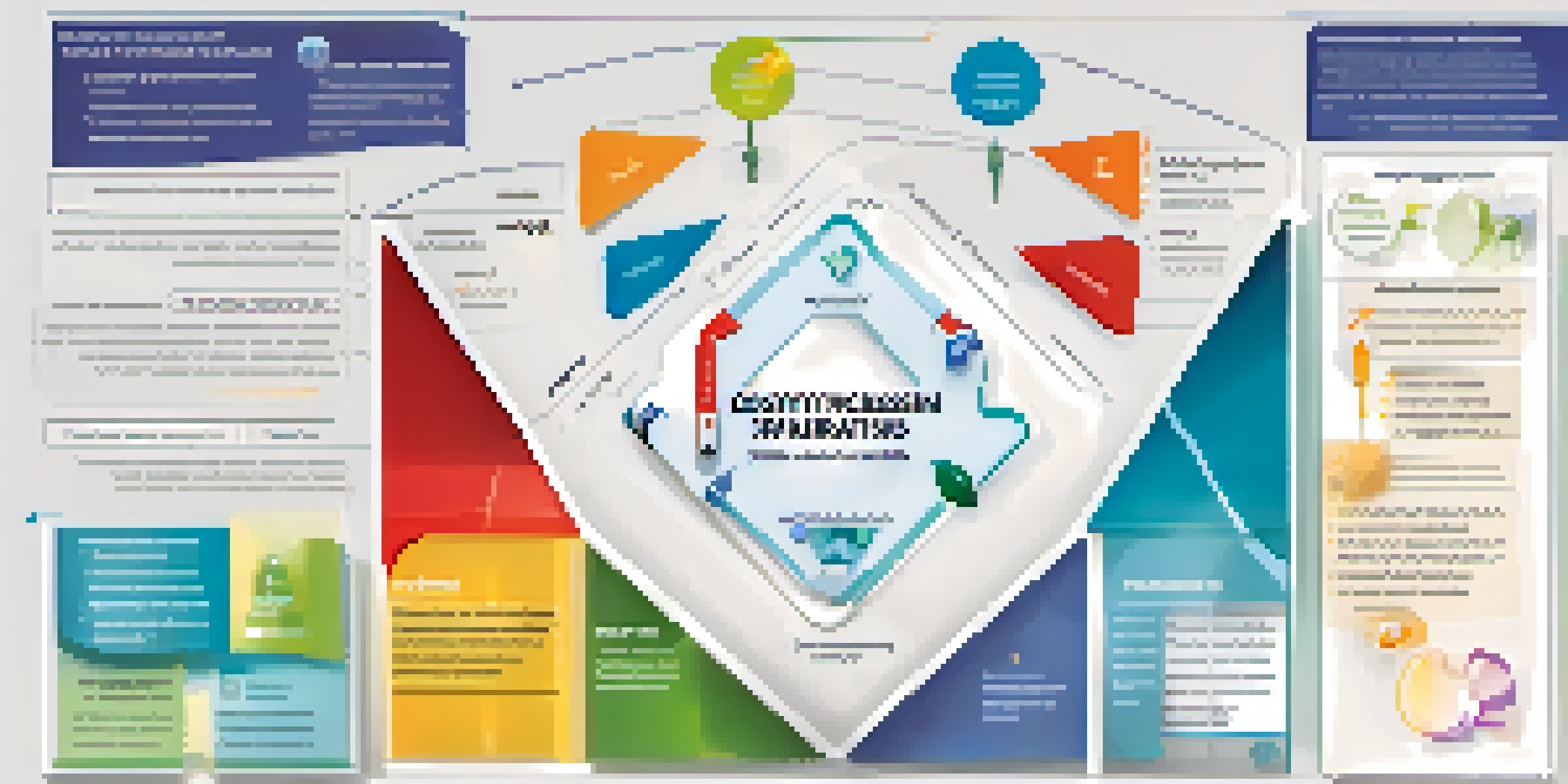Cost-Effectiveness Analysis in Healthcare Decision Making

What is Cost-Effectiveness Analysis?
Cost-Effectiveness Analysis (CEA) is a method used to evaluate the financial efficiency of different healthcare interventions. It compares the relative costs and outcomes of various treatment options, helping decision-makers choose the most effective strategies. This analysis is crucial in identifying the best use of limited healthcare resources, ensuring that funding goes to interventions that provide the greatest benefit.
In healthcare, we must strive to deliver the best outcomes for our patients while being mindful of the resources we consume. Cost-effectiveness analysis helps us achieve this balance.
The process involves calculating the cost per unit of health outcome, often measured in quality-adjusted life years (QALYs). By assigning a monetary value to health outcomes, CEA allows stakeholders to visualize the trade-offs between spending and health gains. This clarity is vital for hospitals, insurers, and public health officials aiming to maximize the impact of their investments.
Ultimately, CEA serves as a guiding tool in healthcare decision-making, promoting transparency and accountability. By making informed choices based on solid evidence, healthcare providers can improve patient outcomes while also managing budgets effectively.
The Importance of Cost-Effectiveness in Healthcare
Cost-effectiveness analysis plays a pivotal role in healthcare systems around the world. With rising healthcare costs and limited resources, it helps prioritize interventions that offer the most significant health benefits for the money spent. This approach not only aids individual patients but also contributes to the overall efficiency of healthcare systems.

For instance, if a new drug costs significantly more than an existing treatment but offers only marginal improvements, CEA helps highlight this disparity. By providing a framework for comparing options, it encourages stakeholders to consider both clinical outcomes and financial implications. This can lead to better healthcare policies and more equitable access to effective treatments.
Cost-Effectiveness Guides Healthcare
Cost-effectiveness analysis (CEA) evaluates healthcare interventions by comparing their costs and outcomes, helping decision-makers allocate resources efficiently.
Moreover, CEA fosters innovation by encouraging pharmaceutical companies and healthcare providers to develop cost-effective solutions. By demonstrating the value of new therapies, CEA can influence funding decisions and promote the adoption of practices that improve patient care without unnecessary expenditure.
Key Components of Cost-Effectiveness Analysis
Several key components make up a comprehensive cost-effectiveness analysis. First, researchers must identify the interventions being compared, which could range from medications to surgical procedures. Next, they gather data on the costs associated with each option, including direct medical expenses and indirect costs such as lost productivity.
Cost-effectiveness analysis is not just about numbers; it's about making informed decisions that can save lives and improve the quality of care.
Outcomes are another critical element, as they determine the success of each intervention. Effective analysis measures outcomes in a standardized way, often through QALYs, to ensure comparability. This standardized approach helps stakeholders understand the real-world implications of their choices and facilitates more informed decision-making.
Finally, sensitivity analysis is essential in CEA, as it tests how changes in assumptions affect results. By examining various scenarios, decision-makers can gauge the robustness of their conclusions and make adjustments as necessary. This flexibility ensures that CEA remains relevant and applicable under different circumstances.
How CEA Influences Policy Decisions
Cost-effectiveness analysis significantly influences healthcare policy decisions at multiple levels. Policymakers use CEA to allocate resources effectively, ensuring that funds are directed toward interventions that yield the highest health benefits. This process often involves complex negotiations, balancing cost with public health needs.
For example, during the approval process for new drugs, regulatory bodies like the FDA may consider CEA findings. If a drug demonstrates a strong cost-effectiveness ratio, it may receive expedited approval or additional funding. This prioritization can lead to quicker access to essential treatments for patients who need them most.
CEA Influences Policy and Access
CEAs play a crucial role in shaping healthcare policies and access to treatments by prioritizing interventions that offer the highest health benefits for the costs involved.
Moreover, CEA can also drive changes in clinical guidelines and reimbursement policies. By providing evidence of cost-effectiveness, healthcare organizations can advocate for broader adoption of certain therapies, ultimately shaping the landscape of patient care for the better.
Challenges in Conducting Cost-Effectiveness Analysis
While cost-effectiveness analysis is a valuable tool, it comes with its own set of challenges. One significant hurdle is the availability and quality of data, as accurate cost and outcome measurements are essential for reliable results. In many cases, limited data sources can lead to uncertainties in the analysis, making it difficult to draw definitive conclusions.
Another challenge lies in the assumptions made during the analysis. CEA often relies on modeling to predict outcomes, which introduces the risk of bias if the model doesn't fully capture real-world complexities. Stakeholders must remain vigilant about these assumptions, as they can significantly influence results and subsequent decision-making.
Finally, the ethical implications of CEA can create tension among stakeholders. For instance, prioritizing interventions based solely on cost-effectiveness might overlook the needs of vulnerable populations. Balancing efficiency with equity is critical to ensuring that CEA supports fair and just healthcare practices.
Real-World Examples of CEA in Action
Numerous real-world examples showcase the impact of cost-effectiveness analysis in healthcare. One notable instance is the evaluation of new cancer treatments, where CEA has helped determine whether the added benefits justify the high costs. By comparing survival rates and quality of life improvements, healthcare systems can make informed decisions about which treatments to fund.
Another example can be found in vaccination programs, where CEA plays a crucial role in determining the cost-effectiveness of immunization strategies. By analyzing the costs associated with vaccine development and distribution against the long-term savings from preventing disease outbreaks, stakeholders can justify investments in public health.
Challenges in CEA Implementation
Despite its benefits, conducting CEA faces challenges such as data quality, assumptions in modeling, and ethical considerations regarding equity in healthcare.
These examples illustrate how CEA not only informs individual treatment choices but also shapes broader public health initiatives. By grounding decisions in economic evidence, healthcare organizations can enhance the effectiveness and sustainability of their services.
The Future of Cost-Effectiveness Analysis in Healthcare
As healthcare continues to evolve, so too will the role of cost-effectiveness analysis in decision-making. Advances in technology and data analytics promise to enhance the accuracy and applicability of CEA, enabling more nuanced assessments of interventions. This progress could lead to better-informed choices that optimize both health outcomes and resource allocation.
Moreover, the growing emphasis on personalized medicine and value-based care will likely shape future CEA methodologies. By incorporating individualized patient data, CEA can provide insights tailored to specific populations, enhancing its relevance in diverse healthcare settings. As a result, stakeholders may find themselves making more precise and impactful decisions.

Finally, the integration of patient preferences into cost-effectiveness analysis may become increasingly important. By considering the values and priorities of patients, CEA can help ensure that healthcare decisions reflect not only economic efficiency but also the needs and desires of those receiving care. This holistic approach could lead to a more patient-centered healthcare system.